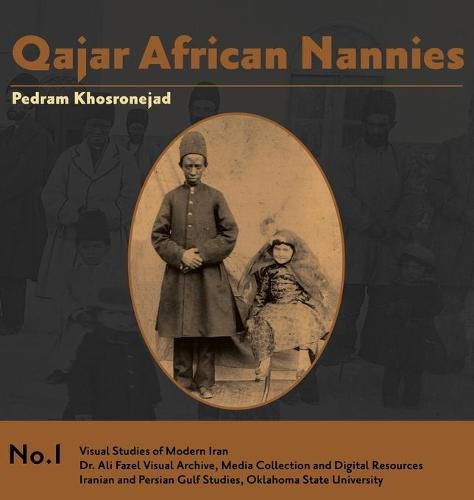Readings Newsletter
Become a Readings Member to make your shopping experience even easier.
Sign in or sign up for free!
You’re not far away from qualifying for FREE standard shipping within Australia
You’ve qualified for FREE standard shipping within Australia
The cart is loading…






This title is printed to order. This book may have been self-published. If so, we cannot guarantee the quality of the content. In the main most books will have gone through the editing process however some may not. We therefore suggest that you be aware of this before ordering this book. If in doubt check either the author or publisher’s details as we are unable to accept any returns unless they are faulty. Please contact us if you have any questions.
The study of race and ethnicity should be considered as an overlooked subject in the field of Iranian photography. One of the important themes in this regard which requires special attention is photography of enslaved people in Iran during the Qajar period. Students of the field have not shown any particular interest in photography of the enslaved in general, nor of African slaves in particular. Therefore, photography of Africans enslaved during the last decades of the Qajar period (1860s-1920s) should be considered as a new topic in the field of visual studies of modern Iran.
Qajar photographs in which the presence of African slaves (children, women and men) can be observed were mostly taken by Nasser al-Din Shah inside his harem, or in his own studio. The remainder of such photographs were taken by court photographers inside the court, during the king’s travels, or on other occasions and locations but outside the court.
This book is the first of its kind to use photographs of the Qajar period to prove the level of ability of the medium to document and simultaneously pathologise the history, culture, story, and maybe struggle of African slave communities in Qajar Iran.
Pedram Khosronejad has amassed an incredible collection of major interest to historians of slavery, Africanists, scholars of photography, anthropologists, and others.
Uniquely and collectively these affecting portraits of stone-faced, sad-eyed men, women and children tell poignant stories of loss, violent separations, and brutal dislocation. Those are their stories and, as is too often forgotten, also those of their families, who lost them forever.
Looking at the vanished world Pedram Khosronejad rescued from oblivion and forces us to confront should also lead us to learn about the resilient contemporary Afro-Iranian community and its place in today’s society.
Dr. Sylviane A. Diouf, Director of the Lapidus Center for the Historical Analysis of Transatlantic Slavery, Schomburg Centre, New York, USA.
$9.00 standard shipping within Australia
FREE standard shipping within Australia for orders over $100.00
Express & International shipping calculated at checkout
This title is printed to order. This book may have been self-published. If so, we cannot guarantee the quality of the content. In the main most books will have gone through the editing process however some may not. We therefore suggest that you be aware of this before ordering this book. If in doubt check either the author or publisher’s details as we are unable to accept any returns unless they are faulty. Please contact us if you have any questions.
The study of race and ethnicity should be considered as an overlooked subject in the field of Iranian photography. One of the important themes in this regard which requires special attention is photography of enslaved people in Iran during the Qajar period. Students of the field have not shown any particular interest in photography of the enslaved in general, nor of African slaves in particular. Therefore, photography of Africans enslaved during the last decades of the Qajar period (1860s-1920s) should be considered as a new topic in the field of visual studies of modern Iran.
Qajar photographs in which the presence of African slaves (children, women and men) can be observed were mostly taken by Nasser al-Din Shah inside his harem, or in his own studio. The remainder of such photographs were taken by court photographers inside the court, during the king’s travels, or on other occasions and locations but outside the court.
This book is the first of its kind to use photographs of the Qajar period to prove the level of ability of the medium to document and simultaneously pathologise the history, culture, story, and maybe struggle of African slave communities in Qajar Iran.
Pedram Khosronejad has amassed an incredible collection of major interest to historians of slavery, Africanists, scholars of photography, anthropologists, and others.
Uniquely and collectively these affecting portraits of stone-faced, sad-eyed men, women and children tell poignant stories of loss, violent separations, and brutal dislocation. Those are their stories and, as is too often forgotten, also those of their families, who lost them forever.
Looking at the vanished world Pedram Khosronejad rescued from oblivion and forces us to confront should also lead us to learn about the resilient contemporary Afro-Iranian community and its place in today’s society.
Dr. Sylviane A. Diouf, Director of the Lapidus Center for the Historical Analysis of Transatlantic Slavery, Schomburg Centre, New York, USA.